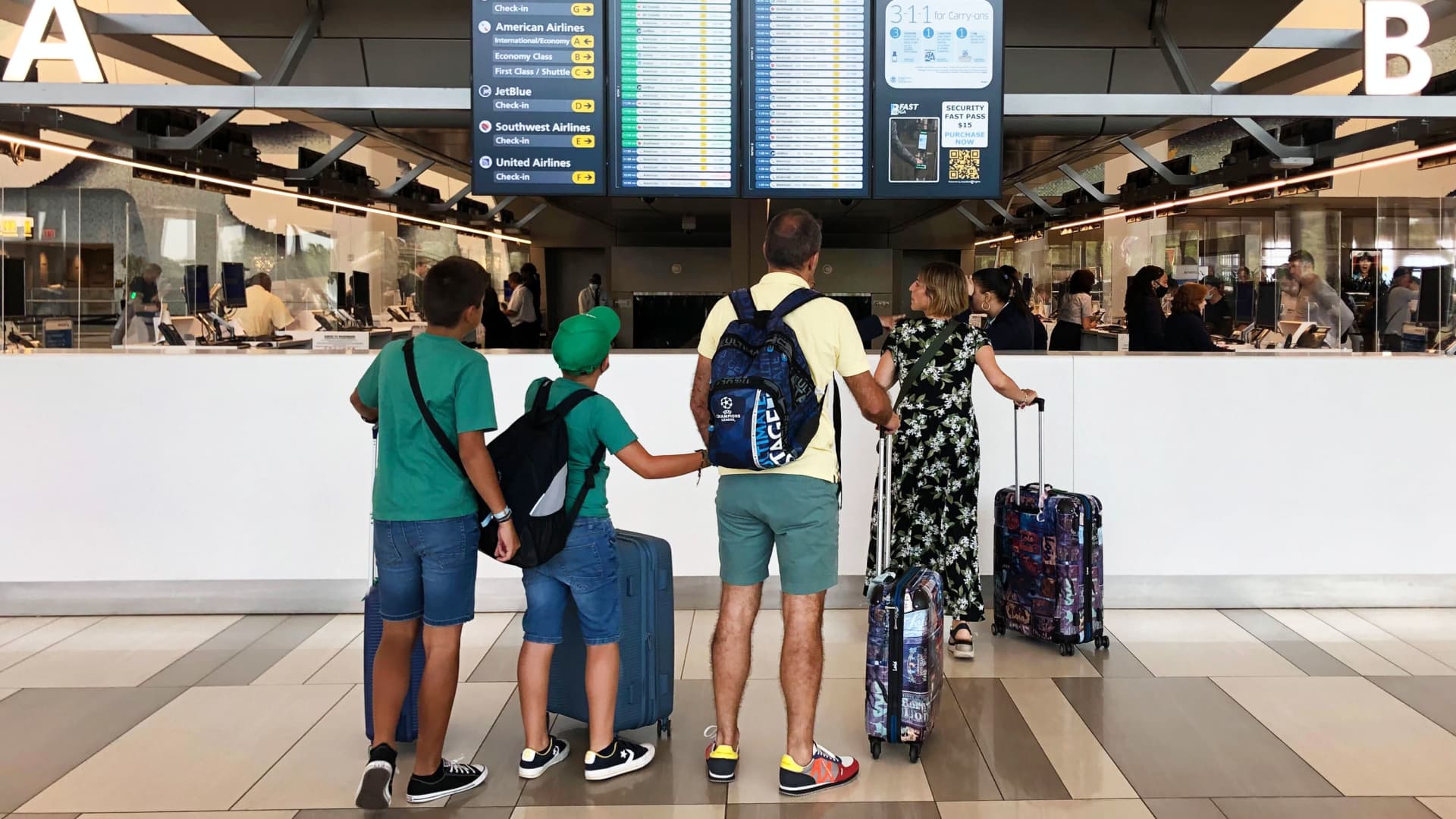Travelers at LaGuardia Airport in New York on June 30, 2022.Leslie Josephs | CNBCAirfare fell 6.4% in January from a year earlier, the Labor Departmen
Travelers at LaGuardia Airport in New York on June 30, 2022.
Leslie Josephs | CNBC
Airfare fell 6.4% in January from a year earlier, the Labor Department said in its monthly consumer price index on Tuesday. It might not last too long.
January is typically a slower month for travel as customers take fewer trips following the new year. Domestic travel usually picks up during school breaks and spring holidays.
The drop comes even though carriers are facing capacity constraints this year, in part because of an engine recall from Pratt & Whitney, congested airspace and delayed aircraft deliveries. Meanwhile, airline executives have forecast robust demand this year, even in the domestic market, which has faced more competition from international destinations that opened up in the wake of the pandemic. Those trends could help lift fares.
“The capacity decline is related to artificial constraints due to aircraft delivery delays and GTF engine issues,” TD Cowen airline analyst Helane Becker said in a note on Feb. 9. “These are not going away any time soon. Since demand remains above year ago levels, and above 2019 levels, we expect improvement in pricing.”
Airlines including Southwest and Alaska have moderated their capacity growth forecasts for the year. Last year, airlines had been forced to discount flights, particularly in off-peak periods, after the industry added capacity.
Flight tracker Hopper said it expects “good deal” domestic fares â which it defines as the bottom 10th percentile of available fares â to average $276 in February. The company expects the average to rise to $302 in May, a more than 9% increase from its February forecast.
Delta CEO Ed Bastian said aircraft repairs and the parts supply chain are the biggest areas of the business that haven’t returned to pre-pandemic levels.
“All the suppliers in our industry lost a tremendous amount of experience due to the pandemic, and it’s taking time to get that back,” Bastian said on a Jan. 12 earnings call.
The grounding last month of Boeing 737 Max 9 planes after a midflight blowout of a fuselage panel caused capacity constraints for Alaska and United, the only two U.S. operators of the aircraft, though the planes returned to service in late January.
The Federal Aviation Administration has said it will stop Boeing from increasing Max production as it reviews the plane-maker’s manufacturing lines.
Alaska said it expected capacity to grow from 3% to 5% this year when releasing its quarterly earnings last month but, “given the grounding, and the potential for future delivery delays, the Company expects capacity growth to be at or below the lower end of this range.”
United Airlines CEO Scott Kirby said on a Jan. 23 earnings call that he expects a challenging environment in 2024 as the industry deals with hiring constraints, maintenance catch-up and supply chain issues.
“It turned out to be even more challenging than we thought …Those operating environment challenges led directly to industry capacity plans, including our own, coming down three points on average as carriers adapted to the new operating environment,” Kirby said.
Demand for air traffic has continued to rebound from its pandemic lows. Total global traffic reached 94% of its pre-pandemic level in 2023, according to the International Air Transport Association.
www.cnbc.com

COMMENTS